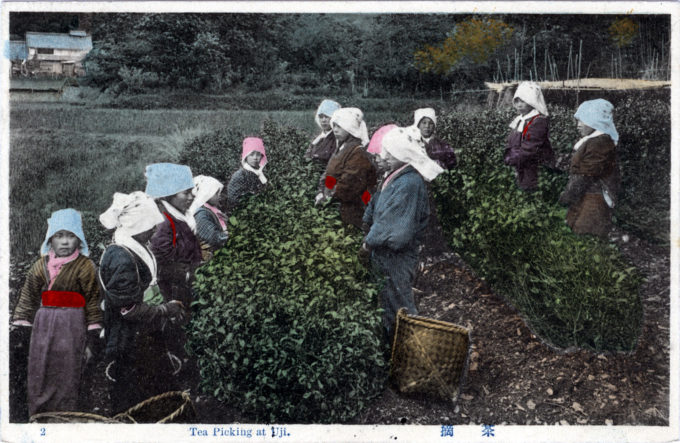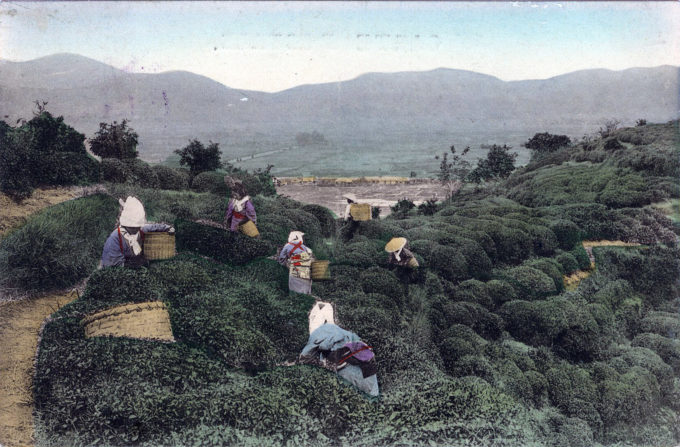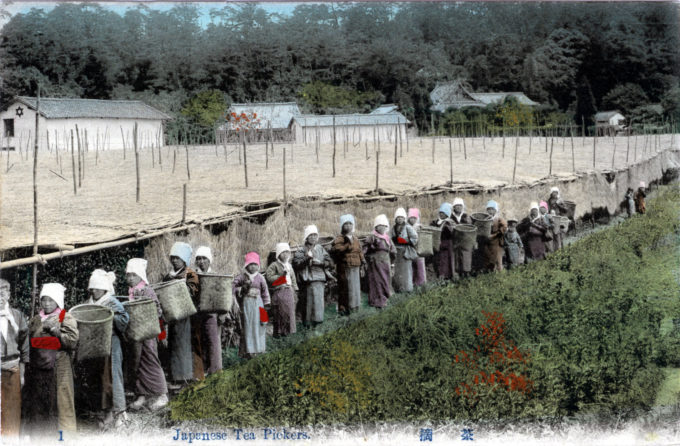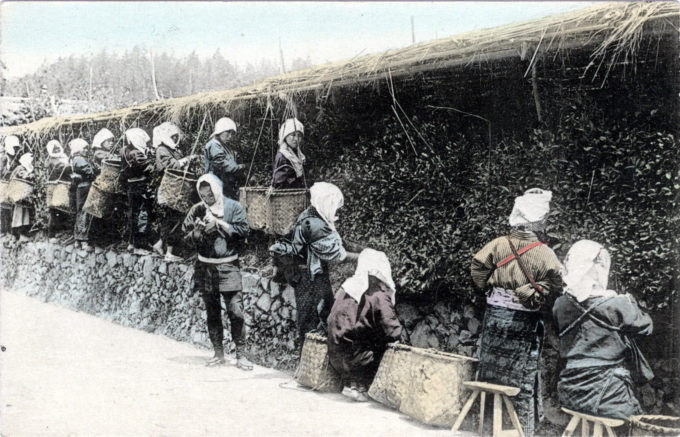See also:
Tea Time, c. 1910
Green tea culture, c. 1950
Ochaya (tea house), c. 1910
“Every hill is covered with low, knob-like bushes that sweep down to the very roadside, their white waxy flowers perfuming the air. Young girls, gay in brightly colored costumes, are snipping young leaves, most of which, dried by fire and manipulated by hand until the virgin green changes to a dark olive purple, will find their way to America.
“This one province of Shizuoka produces near thirty million pounds of tea a year, which is but a third of Japan’s total output. Ninety millions pounds of tea! Small wonder that Japan has ennobled tea drinking into a religion of aestheticism and has written a ‘Holy Scripture of Tea,’ with punctilious instructions that ‘each leaf should fold like a mist rising out of a ravine and be wet and soft like fine earth newly swept by rain.'”
– Japan in Silhouette, by Trowbridge Hall, 1925
- Japanese tea pickers, c. 1920.
- Drying picked tea, c. 1920.
“The Uji Province, noted for its tea-raising since an early day, lies between Ise and Kyoto on the west. A tea plantation, consisting of acres of evergreen bushes, from two to three feet in height, is one of the prettiest sights of this region. Except the better grade of tea, the plants are left exposed to the rays of the sun, but those that produce the highest qualities are covered with mats thrown over bamboo frames.
“The soil and climate of this locality combine to make the cultivation of this herb particularly successful. Throughout this large district every swell of land, be it hill or mound, is terraced and planted with the tea-shrub, which looks at first sight like the myrtle. It bears a yellow and white blossom, resembling the wild camelia. It is from this region the tea comes which we get in the United States.”
– Japan: The Place and the People, by George Waldo Browne, 1901
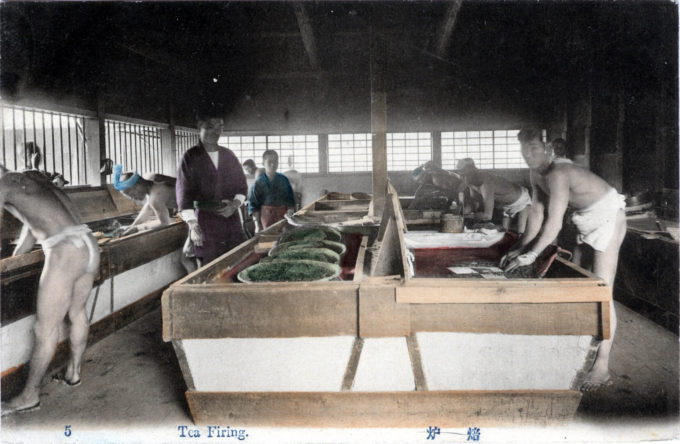
Tea firing, c. 1920. In order for processed tea leaves to be shelf-stable, and not become spoiled during shipping, they must be dried. Sun-drying would allow the leaves to dry ‘naturally’. A faster method was charcoal-drying, where tea leaves were set in shallow bamboo baskets and slowly heated over hot coals.


